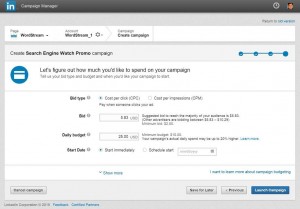
Traffic generation is a standard metric for most content marketers.
With two-thirds of marketing professionals citing website traffic as the most effective content marketing metric, brands must understand how to drive visitors without compromising quality.
Unfortunately, as SEO and traffic generation practices have changed over the years, many mistakes have become intertwined with effective tactics. From keyword stuffing to writing low-value content, there are many seemingly well-established SEO practices that can greatly harm your website traffic and damage your brand’s credibility.
Instead of giving up on your content marketing strategy, determine what tactics are harming your website and how you can resolve these issues.
Here are seven traffic generation tactics to avoid at all costs:
1. Stuffing content with keywords
Adding keywords to content without a strategy can drastically hurt your website traffic. Whether it’s including irrelevant words and phrases or a high volume of keywords, these are harmful SEO tactics. Not only can Google mark your website as spam or lower your page ranking for including irrelevant keywords, your customers will feel betrayed by your use of misleading information.
Instead of stuffing your content with as many keywords as possible, write high quality content your audience will use as a valuable resource. One way to do this is to think about the questions your readers type into Google and transform these questions into powerful blog posts that provide needed answers.
You can also use platforms such as Quora or Reddit to find out what discussions customers are having about products or services relevant to your industry. These results will help you determine the keywords people use to discover your brand.
For example, let’s say you’re an interior designer who specializes in kitchens. Make a list of common questions asked by your audience, such as “What is the best color to paint my kitchen?”
As you analyze search results, you might notice that “best color to paint kitchen” would be a valuable keyword to use in your content.
2. Building as many backlinks as possible
When it comes to link building, it’s all about quality over quantity. While it might seem like a smart traffic generation tactic to have thousands of links directing to your website, this practice can actually hurt your SEO.
Use tools like Buzzsumo to find out which websites have the top authority in your industry. Once you’ve found a few high-authority websites, determine whether or not their content is relevant to your brand. After you have a list of pages where your website would be a great fit, reach out to the outlet about linking back to your content.
Another way to avoid backlinking mistakes is to link your content to your social media platforms. For example, include a link to your most recent blog post or a landing page in your Twitter bio. You can also submit your links to websites like StumbleUpon and Digg to generate more traffic.
3. Focusing only on page rankings
For many marketers, it’s a high priority to make it to the top of Google’s search results. While page ranking is an important factor, it’s also smart to avoid putting all your eggs in a single basket.
There are many elements influencing your page ranking. A 2015 study of 150 marketing professionals by Moz found that 88 percent of respondents believe mobile-friendliness will influence page rankings. Additionally, 81 percent believe a visitor’s perceived value of the website also influences page rankings.

Instead of worrying about how high your website is ranked, think about the different strategies you can implement to drive results for your brand. For example, can you include more optimized landing pages? Are you able to produce content that immediately answers a question? By thinking about these tactics, you’ll be able to tweak your website so it appears in top results, thereby generating more traffic.
4. Writing low-value content
In the early stages of content marketing, there was a lot of pressure on webmasters to blog as often as possible in order to boost website traffic. As a result, many marketers published large volumes of content that didn’t offer much value – and when Google changed its algorithm to penalize websites that publish low-value content, these sites were hit with lower page rankings and decreased website traffic.
Content marketing today is much different than it was five years ago. When creating content to increase traffic, it’s essential that anything you write should offer value for the customer. According to a 2015 study of 442 marketing and sales professionals by Conductor, more than half of respondents found quality content creation as their most valuable SEO tactic.
As you implement your content creation strategy, there are a number of elements to consider. First, who is reading your blog? Do visitors read your content to find answers to problems, or do they simply want to learn about your product? It’s also important to format content in a way that’s both easy to consume and entertaining. Once you understand your readers and how they consume content, you’ll be able to deliver information that drives traffic to your website.
5. Duplicating content on different websites
Have you ever written an amazing blog post for your company’s blog, and then pitched it to an outlet to be published as a guest blog? Although this is a great way to gain exposure for your brand, it can also hurt your website traffic.
There are numerous pros and cons to republishing content or submitting it to syndication services. Sure, while doing so is a great way to increase the number of backlinks pointing at your site, it also has the effect of driving traffic for other websites. Additionally, if your content is published on several different outlets, it becomes difficult to monitor whether or not every website is publishing the correct content or making unauthorized changes.
One of the best ways to avoid these obstacles is to focus on publishing extremely valuable content on your blog and promoting it on social media, while also creating high-value content exclusively for submission to syndication services or guest blogging opportunities. This is an effective way to position your website as a resource and drive traffic back to your website, and you won’t have to worry about other websites generating traffic from your original content.
6. Including too many large files and complex coding on your website
Research by Kissmetrics found people expect websites to load in two seconds or less. If your website is taking too long to load because of large images and complex coding, this is likely to be a culprit behind your poor traffic.

According to Moz, 58 percent of marketers believe website speed influences page ranking. Fortunately, there are a few things you can do to ensure your website is loading quickly. First, use tools such as Google’s PageSpeed Insights to determine your page speed time and identify valuable solutions to improve your loading time. It’s also important to assess the size of your images. If your files are extremely large, they’ll need to be compressed to speed up loading time and better capitalize on the traffic coming to your website.
7. Driving traffic without a conversion strategy in place
Okay, to be fair, this one isn’t about generating traffic so much as it is about making sure you get the highest possible value out of the traffic that does wind up on your pages. After all, why bother driving traffic in the first place if you don’t have a defined conversion path on your website to capitalize on their interest?
The appropriate conversion strategy for your website will depend on your products, services and goals. If you’re simply trying to capture leads, your conversion path might consist of an opt-in form and an incentive for completing it. If you’re selling multiple products – especially bigger ticket items – your conversion funnel might include lead magnets, multiple calls-to-action and other features. Regardless of the approach you take, you need to have a strategy in place, and you need to test it continually to ensure that it’s converting as much of your traffic as possible.
Although traffic generation remains to be a top challenge for marketers, understanding the best and worst strategies will help you develop and implement an effective strategy for your brand. By keeping these traffic generation mistakes in mind, you’ll improve your website traffic and keep visitors coming back for more.
What are some of the most ineffective traffic generation tactics you’re aware of? Share your thoughts or experiences in the comments below.
Digital & Social Articles on Business 2 Community(156)









